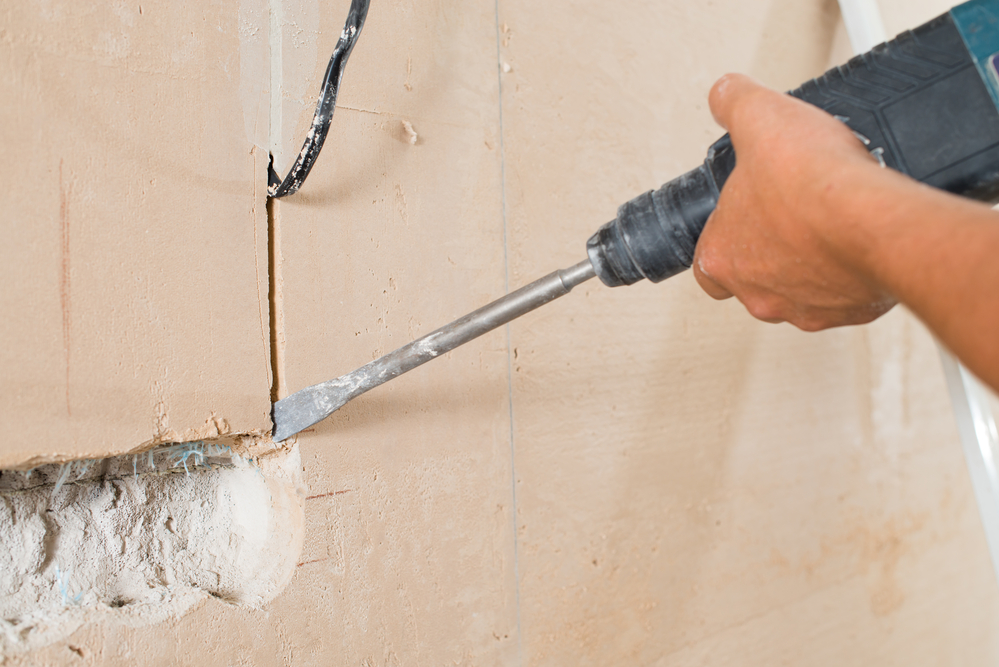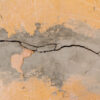How to repair stucco holes is a question many property owners in Philadelphia face. Stucco, a common exterior finish, is known for its durability and aesthetic appeal. However, it’s not immune to damage. Due to weather conditions or physical impacts, small holes and cracks can appear over time. Repairing these imperfections promptly is crucial to maintaining your property’s integrity and appearance.
Premier Building Restoration: Expertise in Stucco Repair
Premier Building Restoration offers specialized services in stucco & EIFS repair. Our team possesses the skills and knowledge needed to address various stucco-related issues. We understand that each repair task is unique, and we approach each project with the attention it deserves. Whether it’s a small hole or a larger area requiring attention, our experts ensure that the repair blends seamlessly with the existing surface, preserving the original look and feel of your building.
Assessing the Damage
This assessment is more than just a visual inspection; it involves understanding the extent and cause of the damage to ensure the right repair approach. Begin by examining the size and depth of the holes or cracks in the stucco. Small, superficial cracks might simply result from natural settling or minor impacts, while larger holes or widespread cracking could indicate more serious underlying issues, such as structural movement or water damage. In the case of larger holes, it’s important to check the surface and the underlying layers of the stucco system, as damage here can compromise the building’s integrity.
The location of the damage is also a key factor. Damage near windows, doors, or corners may be due to differential movement or thermal expansion, while damage on flat surfaces might be due to external impacts or internal stresses. For historic buildings in Philadelphia, it’s essential to consider the age and historical value of the stucco, as this might affect the choice of repair materials and methods.
Moisture assessment is another critical aspect. Trapped moisture can lead to deterioration of both stucco and its supporting structure. Use moisture detection tools or look for signs of water staining or mold growth, which can indicate moisture issues. Assessing the damage thoroughly ensures that the repair addresses not just the cosmetic aspects of the stucco damage but any underlying structural or moisture-related issues, thereby maintaining the building’s health and longevity.
Tools and Materials Needed for Stucco Repair
The basic toolkit should include a hammer and chisel for removing damaged stucco, a wire brush for cleaning the area, and a trowel for applying the new stucco. Safety equipment like gloves and safety glasses is essential to protect against debris and dust.
The primary material required is the stucco patching compound, which should be chosen based on compatibility with the existing stucco. A standard cement-based patching compound works well for traditional stucco, whereas for EIFS (Exterior Insulation and Finish Systems), a specialized EIFS patching compound is required. In cases of larger holes, you might need a piece of metal lath or mesh to provide a solid base for the new stucco. This helps to ensure that the repair is not only cosmetic but also structurally sound.
Preparing the Area for Repair
To start, clear the area around the damage. Remove any furniture, plants, or decorations that might hinder access or get damaged during the repair. The next critical step is to ensure the damaged area is clean and free from debris, as this could affect the adhesion of the new stucco. Use a wire brush to scrub the area gently, removing loose stucco, dirt, and dust. If there is old, flaking stucco around the hole, use a chisel and hammer to carefully chip it away, not damaging the surrounding intact stucco.
After removing the loose material, it’s essential to check for any underlying issues that may have caused the damage, such as moisture problems or structural defects. Addressing these issues beforehand is vital to prevent further damage after the repair. Once the area is clean and any underlying problems are dealt with, dampen the area slightly with water. This helps in creating a good bonding surface for the new stucco. If you’re using a metal lath for larger holes, securely attach it to the structure to provide a firm base for the new stucco application.
In preparation, gathering all the necessary tools and materials is important, ensuring they are within reach. This includes your stucco mix, trowel, mixing bucket, and any coloring agents if you plan to match the existing stucco color. For properties in Philadelphia, especially those with historical significance, careful preparation ensures that the stucco repair restores the building’s appearance and maintains its structural integrity and historical authenticity.
Steps to Repairing Holes in Stucco
Mix your stucco patching compound according to the manufacturer’s instructions until it reaches a firm, workable consistency. For larger holes, start by affixing a metal lath inside the hole to provide a sturdy base for the new stucco; this ensures the patch will hold up over time. Apply the first layer of stucco patch onto the lath, pressing it firmly to fill in all gaps and create a level with the existing surface. Smaller holes, on the other hand, can be filled directly with the compound. Use a trowel to apply the stucco patch, ensuring it is well-pressed into and fills the hole.
If the hole is deep, build the repair in layers, allowing each layer to partially dry before applying the next. This method helps to prevent sagging and creates a more durable repair. As you apply the final layer, smooth it to flush with the surrounding stucco surface. At the same time, the stucco is still slightly malleable, so it is textured to match the surrounding area. Depending on the existing stucco texture, this could involve using tools like a float or a sponge. Allow the patch to dry and cure fully, which may take several days, depending on the weather conditions and the thickness of the stucco layers.
Once cured, if the color of the new stucco patch doesn’t match the existing stucco, you may need to paint the repaired area. Select a paint that matches the exterior of your building, ensuring that the repair blends seamlessly with the rest of the structure. This step-by-step guide aims to provide property owners and historical preservationists in Philadelphia with the knowledge to effectively repair stucco holes, preserving their buildings’ beauty and structural soundness.
Drying and Curing Process
It’s important to understand that drying and curing are two distinct stages: drying refers to the loss of moisture from the stucco surface, while curing is the chemical process by which the stucco hardens and gains strength. The duration of these processes can vary depending on factors such as the type of stucco used, the thickness of the application, and environmental conditions, particularly in a city like Philadelphia, where weather can fluctuate significantly.
Initially, the stucco patch will start to dry from the outside in. During this period, protecting the area from direct sunlight, wind, and rain is essential, as these elements can cause the stucco to dry too quickly, leading to cracking or weakening. If the weather is hot or windy, you should periodically dampen the patch to slow drying. This can be done gently with a spray bottle or a damp cloth.
The curing process, which typically begins after the stucco has dried, can take several days to weeks. During this time, the chemical reactions within the stucco strengthen the repair. It’s crucial not to disturb or paint over the stucco during this phase. Painting too early can seal in moisture, preventing the stucco from curing properly. Monitoring the stucco during this period for any signs of cracking or damage is also vital, as these can indicate issues with the drying or curing process.
Choose Premier Building Restoration for Your Stucco Repair Needs
If you’re wondering how to repair stucco holes or require professional stucco & EIFS repair, Premier Building Restoration is here to help. We offer comprehensive restoration services to property owners, historic preservationists, and businesses in Philadelphia. Our commitment to quality and attention to detail ensures that your building looks its best and remains structurally sound. Contact us today to experience top-notch service and unmatched expertise in historic masonry restoration.










